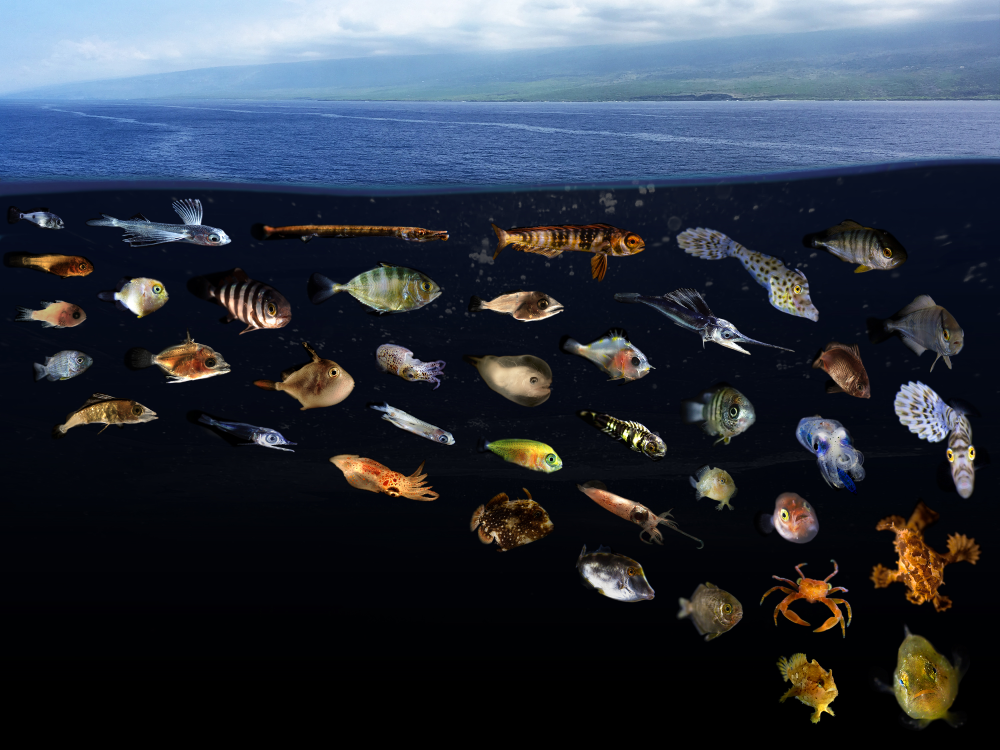Ever been at one of those oceanside airports where you take off over the sea and noticed that among the choppy waters are smooth patches? These surface slicks are a perplexing phenomenon, and it turns out they’re a haven for a vast diversity of tiny lifeforms.
What are those smooth patches out at sea?
There are four key kinds of surface slicks out at sea that are created through slightly different physical mechanisms. These include:
- Internal Wave Slicks – Slicks created by waves that move beneath the water’s surface. These were the most common slicks identified in a 2021 study in Hawaiian waters.
- Groundwater Discharge Plume Front – These slicks are driven by another source of water, such as underground springs. As the flow meets the surface water of the ocean, it creates the shiny slicks we can see from above.
- Headland Front – This kind of slick occurs along the coastline as it’s the result of the way water flows around the uneven obstacle that is the landmass. For instance, if a cliff juts out to sea, followed by a cove that scoops inland, this can alter the flow of the water, creating this kind of slick.
- Langmuir Cells – These slicks can sometimes appear in parallel lines and they’re the result of wind altering the movement of water. Not to be confused with square waves, which are a very different beast and can be deadly.
Satellite imagery (synthetic aperture radar, or SAR) is a good way to study slicks, and everything from wind conditions to tidal phase, groundwater discharge, and the underwater landscape can influence how they emerge. They are a naturally occurring phenomenon, and one that wildlife has taken full advantage of.
Composite image showing just a small portion of the remarkable diversity of larval and juvenile fishes and invertebrates found living in surface slick nurseries along West Hawaii Island.
Image credit: Larval fish: Jonathan Whitney (NOAA Fisheries), Slick photo: Joey Lecky (NOAA Fisheries)
What lives in ocean slicks? AKA, the Neuston Zone
In 2021, scientists carried out over 130 plankton net tows inside the surface slicks and their surrounding waters along the sheltered coast of Hawai’i Island. They then combined their findings from the tows with SAR data on slick footprints.
Their results revealed that while slicks only cover around 8 percent of the surface area studied, they contained 39 percent of the area’s surface-dwelling larval fish. Animals that live just above or below the surface occupy what’s known as the neuston zone, and it’s home to all manner of ocean oddities that are partial to setting up camp in the Great Pacific Garbage Patch.
The study found the density of larval fish was seven times higher in the slicks compared to the surrounding waters, and included the larvae of coral reef triggerfish, mahi-mahi, and lanternfish, as well as snails, crabs, and shrimp. The study also found slicks are a valuable food source, with more than a quarter of the available zooplankton existing inside them.
“We were shocked to find larvae of so many species, and even entire families of fishes, that were only found in surface slicks,” said lead author Dr Jonathan Whitney, marine ecologist at NOAA, in a statement. “These ‘bioslicks’ form an interconnected superhighway of rich nursery habitat that accumulate and attract tons of young fishes, along with dense concentrations of food and shelter.”
“The fact that surface slicks host such a large proportion of larvae, along with the resources they need to survive, tells us they are critical for the replenishment of adult fish populations.”
So the next time you spot an ocean slick out at sea, give it a little wave. You’re saying hello to the fish of the future.
Source Link: What Are Those Smooth Patches Out At Sea?
